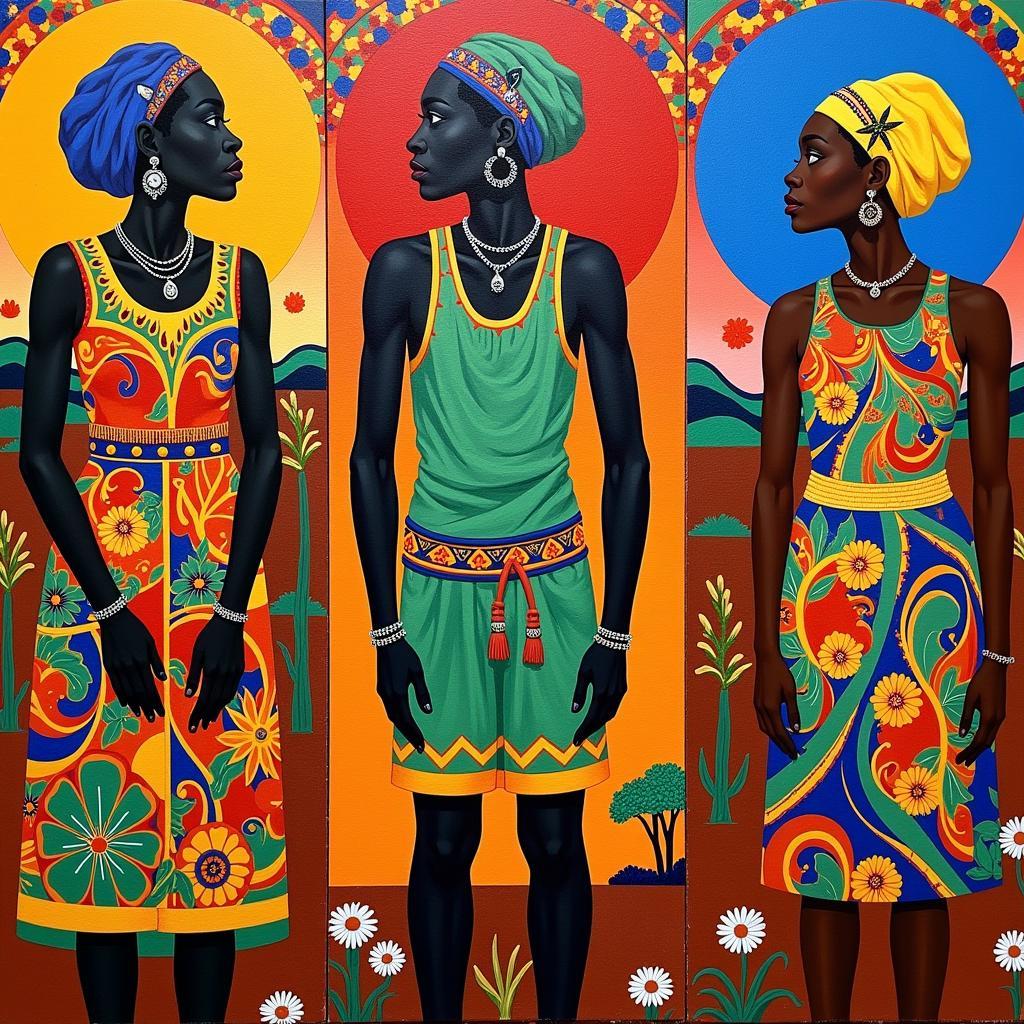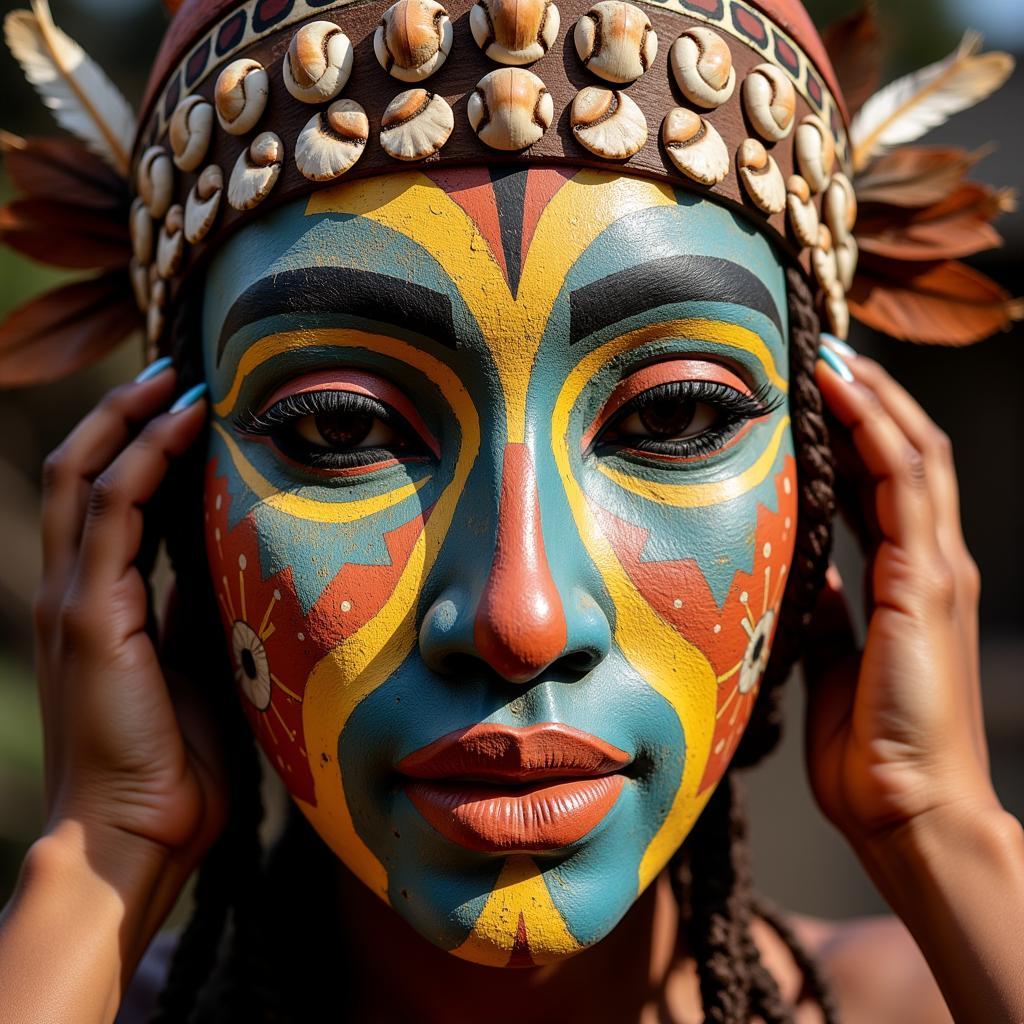Engaging African Animal Activities for Early Years
Learning about African animals is an exciting adventure for young children. African animal activities for early years education offer a fantastic opportunity to introduce children to the diverse wildlife of the African continent while fostering a love for nature and conservation. From playful lions to towering giraffes, the animal kingdom of Africa provides a rich tapestry of learning opportunities.
Learning about African wildlife can be both educational and fun for early years learners. One way to engage children is by using african animals worksheets kindergarten, which provide a hands-on approach to exploring these fascinating creatures.
Exploring the Savannah through Play: African Animal Activities
Incorporating African animal themes into play activities is a highly effective way to engage young learners. Activities such as creating animal masks, building savannah habitats with blocks, and engaging in dramatic play scenarios allow children to embody the animals and learn about their behavior in a natural and enjoyable way.
- Animal Mask Making: Provide children with simple mask templates of various African animals like lions, elephants, and zebras. Encourage them to decorate the masks with vibrant colors and patterns.
- Habitat Building: Use building blocks, cardboard boxes, and natural materials like leaves and twigs to create a miniature savannah habitat. This allows children to visualize the environment where these animals live.
- Dramatic Play: Encourage children to act out different scenarios involving African animals, such as a lion hunting or a group of elephants migrating. This promotes imaginative thinking and social interaction.
Learning about African Elephant History and Gestation
Understanding the life cycle of African animals is crucial for developing a sense of respect and appreciation for wildlife. For example, studying the african elephant history and the african elephant gestation period provides children with valuable insights into the complexities of these magnificent creatures. Discussions about conservation efforts can also be introduced at this stage.
- Life Cycle Charts: Create simple life cycle charts for different African animals, visually representing the stages of growth from birth to adulthood.
- Gestation Games: Use interactive games to teach children about the gestation periods of different African animals. This can involve matching animal mothers with their babies or arranging animal cards in order of gestation length.
- Storytelling: Share stories and folktales from African cultures that feature animals. This helps children connect with the cultural significance of these creatures.
African Grey Parrot Care and the African Bullmastiff: Exploring Unique Species
Introducing children to unique African animal species expands their knowledge and fosters curiosity. Learning about the African Grey Parrot care sheet or the characteristics of the African Bullmastiff provides a deeper understanding of the diverse animal kingdom within Africa.
- Research Projects: Encourage children to research and present information about a specific African animal of their choice. This can involve creating posters, drawings, or short presentations.
- Guest Speakers: Invite experts on African animals to speak to the children. This can be a zookeeper, a wildlife conservationist, or even a veterinarian.
- Virtual Field Trips: Use online resources to take virtual field trips to African wildlife sanctuaries or national parks. This allows children to experience the animals in their natural habitats.
African animal activities for early years education are not just about learning facts, but about fostering a love and appreciation for the natural world. By engaging in creative and interactive activities, children can develop a deep understanding of the diverse wildlife of Africa and the importance of conservation.
Dr. Anika Moke, a renowned wildlife educator, states, “Early exposure to the wonders of the animal kingdom is essential for cultivating a lifelong passion for nature conservation.” She emphasizes the importance of hands-on activities and storytelling in engaging young minds and fostering a sense of responsibility towards protecting our planet’s biodiversity. Another expert, Dr. Jabari Olufemi, a conservation biologist, adds, “Through interactive learning experiences, children can develop a profound appreciation for the interconnectedness of all living things and the crucial role we play in preserving the balance of our ecosystems.”
FAQs
What are some simple African animal crafts for preschoolers? Simple crafts can include creating animal masks, making footprint paintings, or building animal habitats using recycled materials.
How can I incorporate African animal themes into story time? Read aloud books about African animals, use puppets to tell stories, or encourage children to create their own stories about African wildlife.
What are some online resources for learning about African animals? Websites like National Geographic Kids and the African Wildlife Foundation offer educational resources and videos about African animals.
How can I teach young children about animal conservation? Discuss the importance of protecting animal habitats, encourage recycling and reducing waste, and support organizations that work to protect African wildlife.
What are some fun African animal games for early years? Play animal charades, create animal bingo cards, or organize a scavenger hunt with animal clues.
If you need further assistance, please contact us at +255768904061, email [email protected], or visit our office at Mbarali DC Mawindi, Kangaga, Tanzania. We have a 24/7 customer service team ready to assist you.

